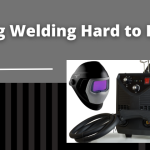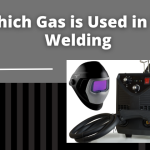Technology is providing you with enhanced safety day by day as the market expands. Auto-darkening welding helmets become essential when dealing with a welding machine. To avoid injury during welding, welding helmets with auto-darkening features are crucial. The light and dark levels are automatically adjusted.
Any welding project requires a welding helmet, no matter how big or small. It’s essential to keep in mind that welding exposes to intense heat and ultraviolet light, resulting in fatal injuries if not handled properly.

How to Test an Auto-Darkening Welding Helmet?
Experts warn against relying on safety promises that a company offers. Check some additional steps instead to ensure safety. Here are some quick steps that can help to determine whether a hamlet is auto-darken.
Expose The Lens To Full Sunlight
This lens can be a good choice when it performs well in the sun. Over the years, the program has demonstrated its reliability.
The best way to test an auto-darkening helmet’s light sensitivity is to expose it to full sunlight. To activate the auto-darkening system, face the sun while wearing the helmet. It is most efficient to test the quality of the helmet in full sunlight.
During this time, ensure that the helmet’s sensitivity setting is set to the highest level. Low sensitivity levels require much light to trigger the lens change; high sensitivity levels require relatively little light.
Sun exposure is also the easiest method for testing the helmet since it does not require additional equipment. However, this only works in bright, sunny weather. As an alternative, explore some of the other options.
But before all these procedure, should know all the necessary safety equipment during welding.
Strike an Arc
Test the helmet by giving it an arc welder flash. Unfortunately, welding is a technique that isn’t always favorable because it exposes the user to certain risks.
To test:
- Ensure your safety by wearing all the necessary safety gear.
- Arc welding requires the use of a welding helmet with auto-darkening technology.
- Verify that the lens reacts appropriately.
Since a helmet is used, evaluating its performance at an angle is the best idea.
Sensitivity and Delay Control Test
A helmet with auto-darkening sensors controls different shades within the helmet using arc sensors. First, check whether your helmet has a delay and sensitivity control since these are two of the most crucial features of an auto-darkening helmet.
Check to see if any changes have been made after changing the settings. Helmets are capable of adjusting to slight variations; therefore, ensure that the helmet performs as expected.
A delay feature on most helmets sold as an auto-darkening welding unit prevents from getting flashed. Make sure the lens is kept dark by this feature.
Safety Test
Welders should wear auto-darkening helmets that meet safety standards to prevent welding accidents or injuries. ANSI Z87.1-2003 specifies the requirements for welding helmets with auto-darkening. Verify the certification information by asking where you purchased the helmet or researching it online.
These properties and features are necessary for an excellent auto-darken helmet.
- Provides complete UV/IR protection
- The infrared filter
- Durable and impact-resistant
- Suitable for temperatures ranging from 23°F to 130°F
Power Test
Solar panels and lithium batteries are usually used to power auto-darkening helmets. Battery-powered helmets are available in both replaceable and non-replaceable types. In addition, a battery pack is used in some solar-powered systems.
It should request to get a warranty card while buying the helmet since batteries are difficult to check. Solar helmets charge when their solar panels detect the light of day. Go outside to check.
Clarity Test
Welding helmets that automatically darken are required to be tested for optical clarity. First, make sure the helmet is clear. By viewing through the lens of the helmet, it allows checking for clarity quickly and easily. In addition, its transparency will make it easier to strike an arc more accurately.
Lens Test
The switching speed of a lens refers to its reaction time; it is how quickly the lens darkens. Even though some helmets may take longer, 1/4000th of a second is the ideal reaction time.
The delay means a greater risk of getting injured when the helmet cannot handle large sparks as quickly as possible. Placing the helmet on and using various methods is all that is needed to test lenses. Changes in light intensity or park size should not affect the lenses’ reaction time.
Grind Mode Test
Auto-darkening helmets often have a grind mode switch or button for activating auto-darkening. Press the grind mode button or flip the switch. Before welding, always turn off the grinding mode to utilize the auto-darkening shade lens.
IR Remote Control Test
In auto-darken helmets, the lenses coat with ultraviolet and infrared protection layers.
- Try the test using a household item like a TV remote. The following example shows how to use a TV remote control.
- First, use the remote to turn on/off the helmet while wearing it.
- Next, focus on the remote’s light toward the lens of the helmet.
- Finally, on the remote control, press any key.
- Ensure that the helmet switches to the dark mode automatically.
- RF and pulsed remote controls will not work because they emit RF signals.
Proper Fit
The helmet wear should fit comfortably while welding. Make sure it’s not too loose or too tight not to impact the vision and safety. If it is too loose, it could shift and expose parts of the neck or cause not to see correctly through the lens.
When working for long periods, a tight helmet can be uncomfortable. To ensure safety, go for a snug fit rather than a loose fit. A simple snap of the neck should secure your helmet in place. Either the side clips are too tight, or this helmet does not automatically lower as it should.
When welding, there is a need to position the face down so that it is protected. Before starting to weld, welders place their helmets correctly by snapping their necks as they approach their workstation.
The flames will meet the metal before the helmet has been lowered, causing a flash. This is the result of intense light, which accompany by ultraviolet rays. A person’s vision may be negatively affected by this.
Eye Fatigue
A welder experiencing eye fatigue will be one of the most apparent signs their welding helmet isn’t working correctly. Overexposure to light usually causes eye fatigue.
There are various signs of eye fatigue, including pain, headaches, blurred vision, and double vision. All of these symptoms should address as soon as possible.
A lot of welders do not wear welding helmets without protective see-through glasses underneath. It protects against ultraviolet radiation rather than blocking visibility.
This is a quick checklist for welding helmets:
- Does the helmet meet the safety standards?
- What’s the right intensity lens for the job?
- Does the lens appear firmly in place?
Are auto-darkening welding helmets powered by batteries?
Yes, although the type of battery is different. Yes, although the type of battery is different. Many come with internal lithium batteries, some of which are non-replaceable, and others have a solar panel as well.
Conclusion
Testing the auto-darkening welding helmet before welding helps avoid eye strain. No arc is required; other methods are as effective for testing the auto-darkening helmet.
A spark from a lighter can also do the trick, as can full sunlight. It’s also possible to use bright fluorescent lights in the absence of the sun. IR remotes are always a good idea if all else fails.
Using these techniques can significantly decrease the time to strike the arc, as the helmet will working correctly before hitting it.
When it comes to testing the effectiveness of auto-darkening helmets, the following steps can be helpful (for beginner and professional welders). First, of course, the helmet is also lightweight and impact-resistant. Still, regardless of the factors being important (minor), it is always essential to test if the auto-darkening mechanism works before using it.

It’s been years since I got into welding as a side hustle. It’s been so long since Doing All kinds of welds for business and pleasure as this is my hobby. Being in this field I have learned from hands-on-experience also came to know what gears work and what doesn’t. The Tig Welder is my own platform where I use to share my experience.






Leave a Reply